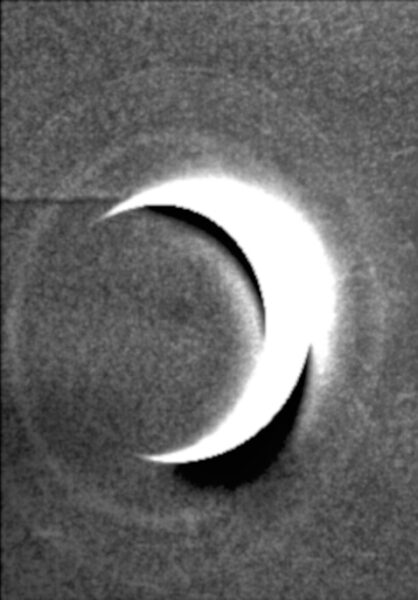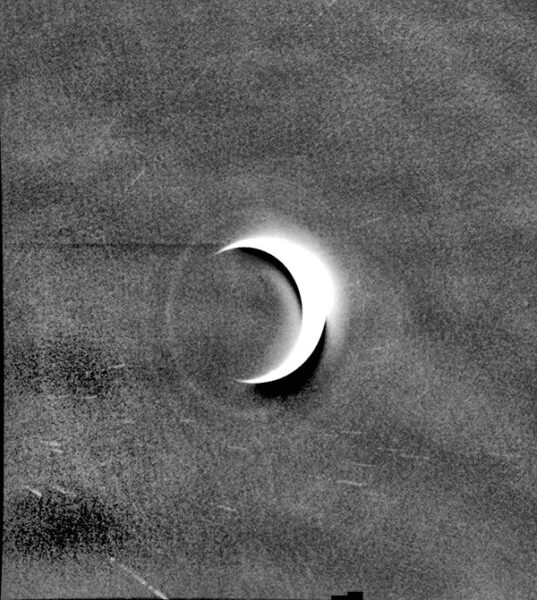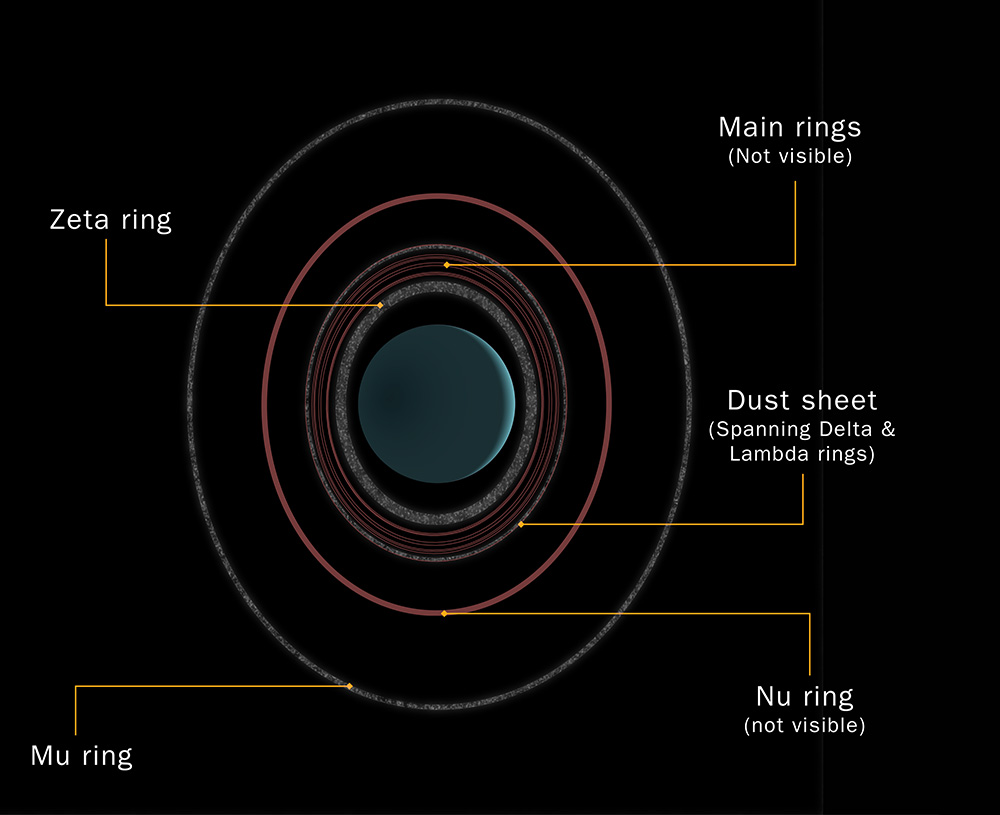25.10.2022
What else is hidden in archival data?
Only two Voyager 2 images contained views of Uranus’ dusty ring system — or so we thought. Since Voyager 2’s 1986 flyby, only ground-based telescopes have yielded views of the rings. Images taken by the W. M. Keck Observatory in 2007 suggested that one of the ice giant’s dusty rings, the inner zeta ring, might have changed in brightness and position since 1986.

These images, taken by the Keck Observatory in 2007, showed a new ring around Uranus, designated zeta (ζ). The ring was only visible during certain times due to the changing angle of the Sun's illumination.
Matt Hedman
But it was hard to be sure, because Keck’s and Voyager’s points of view were so different. Keck can only see the rings illuminated directly by the Sun, like a full Moon, because Earth is near the Sun; the Voyager photos showed the rings from the other side, lit up like dust motes in a sunbeam.
Then Ian Regan, an image-processing enthusiast, asked himself: If there are so many Voyager lookback images of dusty rings at Jupiter, Saturn, and Neptune, why not Uranus? About a year ago, he went to the NASA Planetary Data System (PDS) archives to see if there were more Uranus ring images than had been previously known.
By stacking and enhancing a large set of images using free software tools, he discovered three very faint rings not previously observed in the 35-year-old data: the outermost “mu” ring, which he describes as “a narrow sheet of dust sandwiched between the lambda and delta rings,” and the elusive and enigmatic zeta ring. The latter, he says, is “a broad sheet of dust discovered during the flyby in a single frame shuttered near closest approach.”

Ian Regan

I. Regan

Ian Regan
Regan shared his newly processed data on Twitter. Southwest Research Institute planetary scientist Tracy Becker, who follows Regan on Twitter, forwarded the images to rings scientist Matthew Hedman (University of Idaho), who is not on Twitter. At the Division for Planetary Sciences meeting on October 3rd, Hedman showed the images in a talk coauthored by Regan and Becker, along with a few others. The team now realizes that the zeta ring is visible in additional Voyager images, Hedman said.
“These data not only confirm that the location of the peak brightness in the zeta ring did indeed change between 1986 and 2007,” he added, “but also indicate that the total amount of material in this ring also changed substantially over that time.”
These new observations make Uranus’ ring system appear more similar to those of the other giant planets than it had previously, helping make sense of theories of ring system formation and evolution.
The topic of dust in the Uranus ring system isn’t only an academic one. With a future mission to Uranus receiving priority in the latest planetary science decadal survey, engineers must consider practical questions of how to navigate a spacecraft safely around the Uranus system. We need to know where dust is — and especially, if it’s moving to different distances from Uranus over time — to find safe passage across the ring plane, twice each orbit. Regan’s dusty find in dusty data will protect our future mission to Uranus.
WANT TO GIVE IT A TRY?
For readers interested in replicating what Regan did, or exploring the datasets for themselves, Regan kindly shared the following information about his processing:
I began digging through the OPUS PDS portal, looking for frames that might reveal even a marginal detection of the rings with some intensive image processing. The dataset I downloaded was a series of 164 Voyager ISS wide-angle frames, taken between 1986-01-26 (T18:01:33.00) and 1986-01-28 (T22:49:33.00), most of which were shuttered via the Clear filter.
I converted the calibrated Voyager frames using Bjorn's IMG2PNG applet, then begin feeding them through my own script in ImageJ: This is a semi-automated process that removes stripes and noise before geometrically rectifying each frame to account for the vidicon-induced distortion. Importing the frames into Paint Shop Pro, I used the spacecraft-planet distance information in the PDS metadata to resize the frames to a common scale, rendering Uranus the same size in all images.
Returning to ImageJ, I used the StackReg plugin to center the overexposed crescent of Uranus in each frame. The final step was to co-add (or sum) all 164 frames, producing a 32-bit greyscale final image product, with an integration time of 4 minutes, 51 seconds. At this point, I stretched the image as far as I could push it, and in doing so, revealed a faint band encircling Uranus. At first, I thought I had made a mistake—this 'band' was far too close to the planet to be any of the main rings that were discovered in 1977. However, a check on Wikipedia revealed I had stumbled across the elusive and enigmatic zeta ring: a broad sheet of dust discovered during the flyby in a single frame shuttered near closest approach.
Further stretching and processing revealed two other rings: the outermost mu ring, and [the zeta ring,] a narrow sheet of dust sandwiched between the lambda and delta rings.
Just be sure to take these processing steps in the right order!
Quelle: Sky&Telescope
